Kimberly Heights Elementary School serves 181 students in grades Prekindergarten-Kindergarten.
The student:teacher ratio of 16:1 is higher than the Illinois state level of 13:1.
Minority enrollment is 62% of the student body (majority Hispanic and Asian), which is higher than the Illinois state average of 55% (majority Hispanic and Black).
Quick Stats (2025)
- Grades: Prekindergarten-Kindergarten
- Enrollment: 181 students
- Student:Teacher Ratio: 16:1
- Minority Enrollment: 62%
- Source: National Center for Education Statistics (NCES), IL Dept. of Education
Top Rankings
Kimberly Heights Elementary School ranks among the top 20% of public schools in Illinois for:
Category
Attribute
Diversity
Community Size
School Overview
Kimberly Heights Elementary School's student population of 181 students has grown by 5% over five school years.
The teacher population of 11 teachers has stayed relatively flat over five school years.
Grades Offered
Grades Prekindergarten-Kindergarten
Total Students
181 students
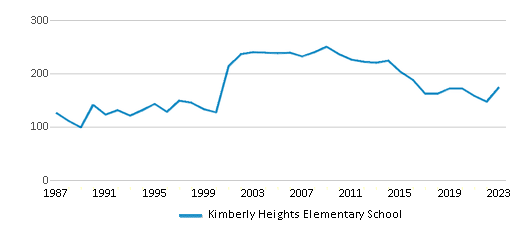
Gender %
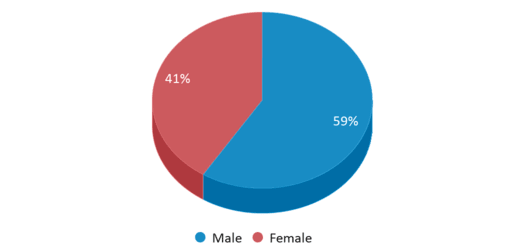
Total Classroom Teachers
11 teachers
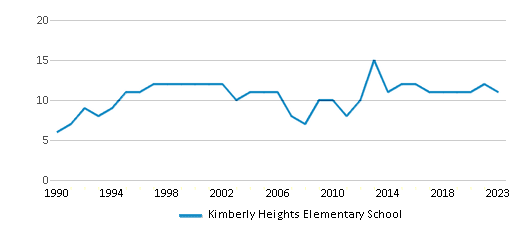
Students by Grade
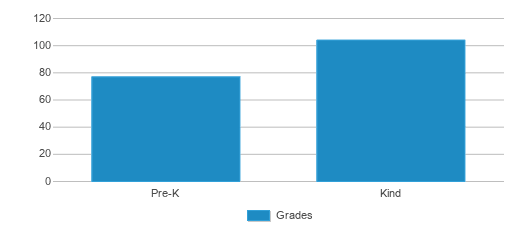
School Calendar
School Rankings
The diversity score of Kimberly Heights Elementary School is 0.73, which is more than the diversity score at state average of 0.70. The school's diversity has stayed relatively flat over five school years.
Student : Teacher Ratio
16:1
13:1
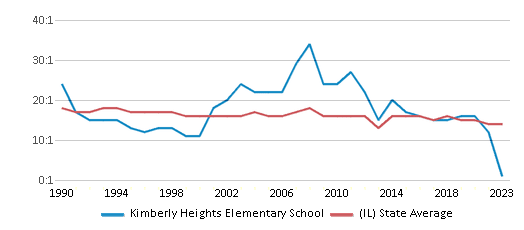
American Indian
n/a
1%
Asian
20%
6%
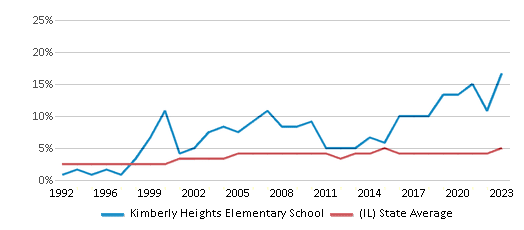
Hispanic
28%
28%
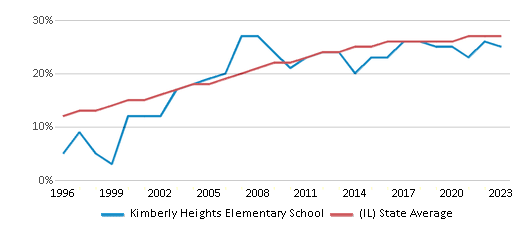
Black
12%
16%
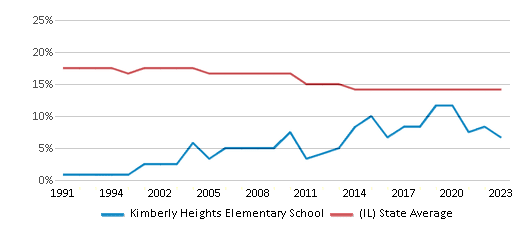
White
38%
45%
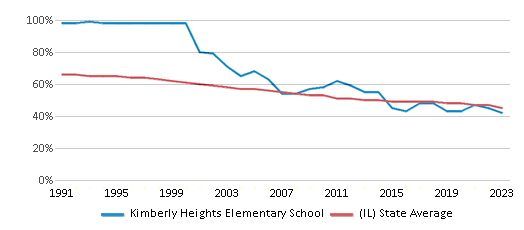
Hawaiian
n/a
n/a
Two or more races
2%
4%
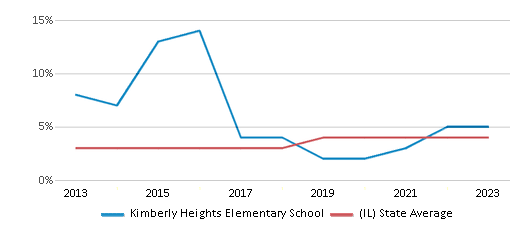
All Ethnic Groups
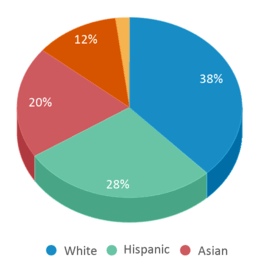
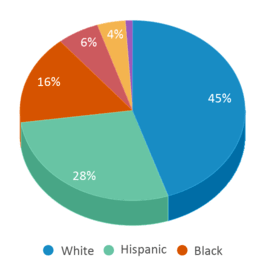
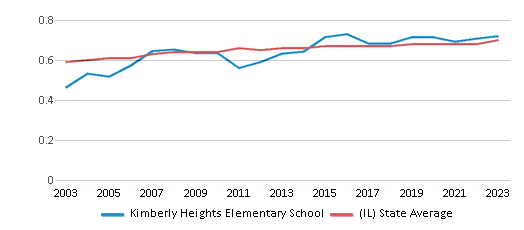
Eligible for Free Lunch
19%
43%
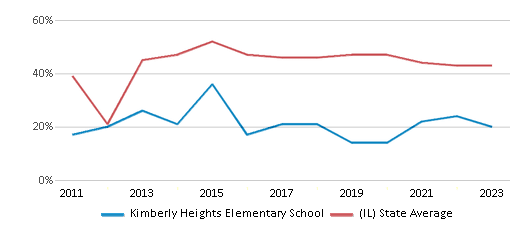
Eligible for Reduced Lunch
4%
4%
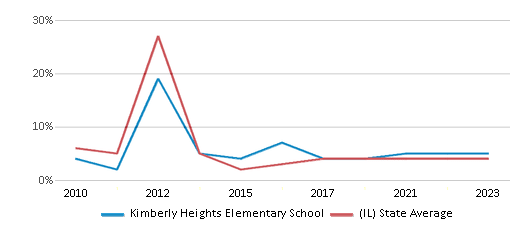
School Statewide Testing
School District Name
Source: National Center for Education Statistics (NCES), IL Dept. of Education
Profile last updated: 02/09/2025
Frequently Asked Questions
How many students attend Kimberly Heights Elementary School?
181 students attend Kimberly Heights Elementary School.
What is the racial composition of the student body?
38% of Kimberly Heights Elementary School students are White, 28% of students are Hispanic, 20% of students are Asian, 12% of students are Black, and 2% of students are Two or more races.
What is the student:teacher ratio of Kimberly Heights Elementary School?
Kimberly Heights Elementary School has a student ration of 16:1, which is higher than the Illinois state average of 13:1.
What grades does Kimberly Heights Elementary School offer ?
Kimberly Heights Elementary School offers enrollment in grades Prekindergarten-Kindergarten
What school district is Kimberly Heights Elementary School part of?
Kimberly Heights Elementary School is part of Arbor Park SD 145 School District.
School Reviews
2 11/4/2007
So far I only have experience with the pre-school program. I would say it is adequate at best. It does not address the needs of the kids that it claims to, with the exception of speech problems. Children are left to their own devices when it comes to fending for themselves against bigger, more aggressive children.
The level of parent involvement is mediocre. I think the teachers and staff are rather snobbish and they seem to discourage parents involvement, unless you are one of their favorite parents. It is more like a high school clique of Moms and teachers than it is a school with parents and teachers working together for the good of the kids. I have switched schools and my child now attends a private pre-school.
Review Kimberly Heights Elementary School. Reviews should be a few sentences in length. Please include any comments on:
- Quality of academic programs, teachers, and facilities
- Availability of music, art, sports and other extracurricular activities
Recent Articles

Sexual Harassment at Age 6: The Tale of a First Grade Suspension
A six-year old in Aurora, Colorado, was suspended after singing an LMFAO song to a little girl in his class and reportedly “shaking his booty.” We look at the case and the sexual harassment problem in public schools today.

How Scaffolding Could Change the Way Your Child Learns
This article explores the concept of instructional scaffolding, a teaching method that enhances learning by breaking down complex tasks into manageable parts. It highlights how scaffolding supports students in developing critical thinking skills and becoming more independent learners. The article discusses the benefits of scaffolding, including improved engagement and reduced anxiety, and provides strategies for its implementation across various educational levels.

February 05, 2025
Understanding the U.S. Department of Education: Structure, Impact, and EvolutionWe explore how the Department of Education shapes American education, from its cabinet-level leadership to its impact on millions of students, written for general audiences seeking clarity on this vital institution.





